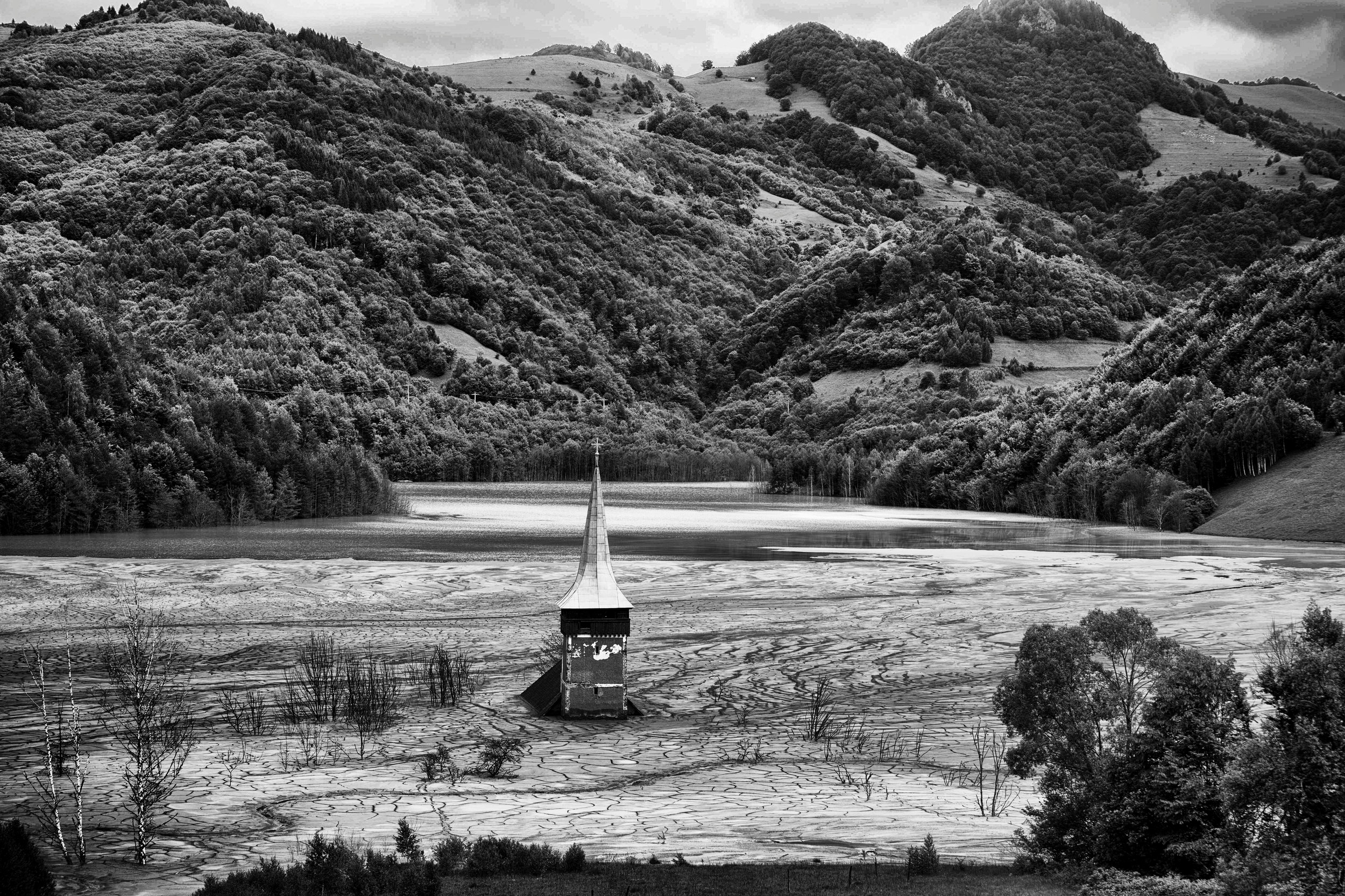DIRTY GOLD
The search for gold on the planet has led to environmental disasters (e.g., mercury pollution) and social and war conflicts over its control.
The Sesii Valley disaster: the pond of tailings covered Geamăna village, the cemetery and church. Before it was a valley and a village, now it's a tailing pond with toxics from the open pit mine Rosia Poieni. Rumania.
Dirty gold
This is a long term documentary photoessay about the gold mega mining in Europe using the cyanid. The crisis is digging for gold in Europe and the gold mining projects are a controversial issue for the local people against the mines.
Most of the mines companies are based in Canada working for investors from different parts of the world including USA. The companies sign savage agreements with governments in basis that in the European Union the use of cyanid is not forbidden at all. The aftermath and consequences of using this toxic and other chemical products are a headache for farmers, fishermen, and many small private companies.
The water is one of the main sources of life in all the areas affected. Mining companies use the water of the rivers in the process of extraction the gold from the rocks where the gold is microscopic. The process use millions of liters of water mixed with cyanid and other toxic heavy metals creating destruction and contamination wherever the water run. Governments, mining companies and politicians are all accomplices of the situation and their hands are full of dirty gold.
The mining companies operate with freedom and help of governments, and the citizens of the affected areas began to organize struggling for their rights. From Corcoesto and Tapia de Casariego in Galicia, Rosia Montana, Kumovgrad in Bulgaria, Bergama, Kaz Dag in Turkey or Ierissos and Skouries in Greece, all of them are fighting for a clean future of poison in their water and their land. For them is a heritage achieved through the efforts of several generations that will enrich a few: "They leave us shit and take the gold" is the most heard expression.
On the other hand a minority of people believe and think that gold mines are good for their lives. Are those working in the mines, often pawn, very low wages or low paid. The governments of these countries take advantage of the low morale of the people due to lack of employment by the prevailing crisis and abduct citizens telling the story of creating many job offers but in most cases end up being for foreigners and hand labor. In any case, regional or national authorities never ask harshly to the affected and impose their interests. It seems to be clear that what it is "bread for today but hunger for tomorrow".
Of all the places affected by the gold mines may Rosia Montana in Romania, Skouries and Ierissos in Greece are those who until now have suffered harassment and detention in police repression, DNA tests by force and arrests that have taken to jail to many residents simply protesting for their rights, to protect what is theirs. In the name of Gold is the irony with which rich countries have been killing and destroying, from the earliest times of humanity. The next generations will blame us for the disaster and they will spend more money in clean the mess, but for sure it never will be, the toxics are forever.
This project had been developed in Greece, Asturias, Galicia and Romania.
At the moment, Canadian mining companies push to governments to change the law or rules to buy old roman mines, already with tons of gold. This powerful lobbies moving billions of dollars look for gold in any place of the world to any price.
Open pit mining is an industry that causes immense environmental, visual, human and cultural impacts, it is based on the exploitation of non-renewable resources found under the surface crust of the earth, its degree of impact will depend directly on the type of mineral that is intended to be extracted.
There are various techniques to execute the mining activity. One of them, and the one we are going to deal with, is the application of chemicals for the leaching of the land through the use of cyanide, mercury and sulfuric acid. These substances are highly toxic and are responsible for dissolving unwanted compounds, with the aim of obtaining the minerals that you want to extract from the earth. It is executed over large areas of terrain, creating large diameter craters and deepening as the process progresses.
Damages the earth's surface, destroys and changes the shape of the earth's crust, forming large amounts of waste material, altering the local morphology.
It pollutes the air, during this activity large amounts of fine toxic "dust" are generated, made up of heavy chemicals that are absorbed by animals and humans.
Contamination of surface waters, if chemical residues are not properly treated and stored, they can leak into fresh water flows, contaminating them and reducing the life present in them.
Damage to underground aquifers, contaminated waste is usually washed by rainwater, which seeps into the subsoil, causing contamination of underground water reservoirs.
Impacts on flora and fauna, the excavation process eliminates all types of flora existing in the earth's crust, in addition the animals are scared away by noise, changes in their habitat and contamination of water sources.
Conflicts between communities and mining companies, surrounding communities are affected and disputes may arise due to improper use of land, in addition to possible overpopulation due to the new source of work.
Visual changes, after the exploitation is finished, huge craters remain in the area, diminishing the attractiveness of the area, negatively affecting tourism.
